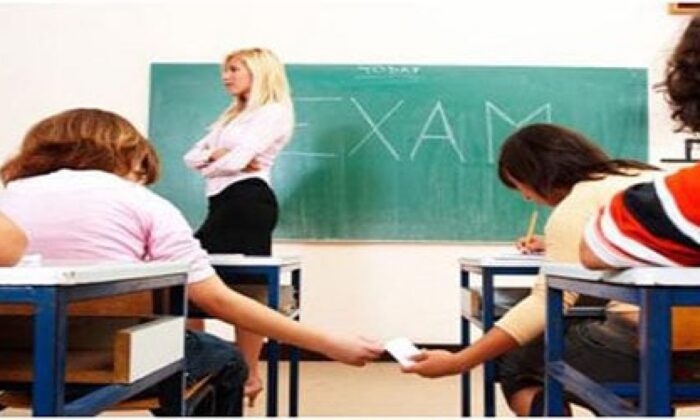National Issues
Examination Malpractice: Understanding the Causes, Consequences and Providing Solutions -By Ibagere Eloho
Another consequence is the perpetuation of a culture of dishonesty. When students engage in unethical practices without facing significant consequences, it normalizes cheating and dishonesty within educational settings. This can have a profound impact on society, as these individuals may carry their unethical behavior into their professional lives, jeopardizing trust and integrity in various fields.

Examination malpractice is a widespread and detrimental issue that plagues educational systems worldwide. It refers to any dishonest or unethical behavior by students or individuals involved in the examination process, with the aim of gaining an unfair advantage. This article delves into the causes, consequences, and potential solutions to combat examination malpractice, highlighting the importance of maintaining the integrity of our education systems.
Causes of Examination Malpractice
Several factors contribute to the prevalence of examination malpractice. One of the primary causes is the intense pressure students face to attain high grades. In highly competitive educational environments, the desire to excel can push some students to engage in dishonest practices. Additionally, a lack of adequate preparation, either due to personal circumstances or ineffective teaching methods, can lead students to resort to malpractice as a shortcut to success.
The influence of technology cannot be ignored either. With the advent of advanced electronic devices, cheating has become more discreet and sophisticated. Students can easily access information, communicate with others, or even hire someone to take exams on their behalf, undermining the integrity of the examination process.
Consequences of Examination Malpractice
The consequences of examination malpractice are far-reaching and detrimental. Firstly, it erodes the credibility and fairness of the education system. When students cheat, those who have genuinely achieved high grades lose their value, and the overall credibility of the system diminishes. This devalues the efforts of hardworking students and undermines trust in educational institutions.
Furthermore, examination malpractice hampers the development of critical skills and knowledge. By relying on cheating, students miss out on the opportunity to learn and grow intellectually. The purpose of examinations is not only to evaluate students but also to encourage them to acquire knowledge, think critically, and develop problem-solving abilities. When malpractice occurs, the true essence of education is compromised.
Another consequence is the perpetuation of a culture of dishonesty. When students engage in unethical practices without facing significant consequences, it normalizes cheating and dishonesty within educational settings. This can have a profound impact on society, as these individuals may carry their unethical behavior into their professional lives, jeopardizing trust and integrity in various fields.
Solutions to Examination Malpractice
Combating examination malpractice requires a multifaceted approach involving various stakeholders. Here are some potential solutions:
1. Strengthening Examination Systems: Educational institutions should invest in robust examination systems that incorporate multiple assessment methods. By diversifying evaluation techniques, such as project work, presentations, and practical exams, the sole reliance on written tests can be minimized, making cheating more difficult.
2. Fostering Ethical Education: Schools and colleges should prioritize ethical education and instill a strong sense of integrity among students. This can be achieved by incorporating ethics courses, conducting workshops on academic integrity, and promoting values like honesty, fairness, and responsibility.
3. Enhancing Teacher-Student Engagement: Teachers play a crucial role in preventing examination malpractice. By establishing open lines of communication, providing guidance, and addressing individual learning needs, teachers can create an environment where students feel supported and motivated. This can reduce the temptation to cheat and promote a genuine focus on learning.
4. Utilizing Technology to Detect Cheating: Educational institutions can employ advanced technology to detect and prevent cheating. This includes using plagiarism detection software for assignments, installing surveillance cameras in examination halls.
Ibagere Eloho, a student from the department of Public Law of the Faculty of Law Delta state university Abraka (Oleh Campus)
















